Koi fish come in numerous colors and patterns that can be an excellent addition to any outdoor space. These decorative fish and lovable pets help bring a serene and relaxing atmosphere to a large and small Koi pond. One of the popular choices for many individuals is the red and white Koi fish.
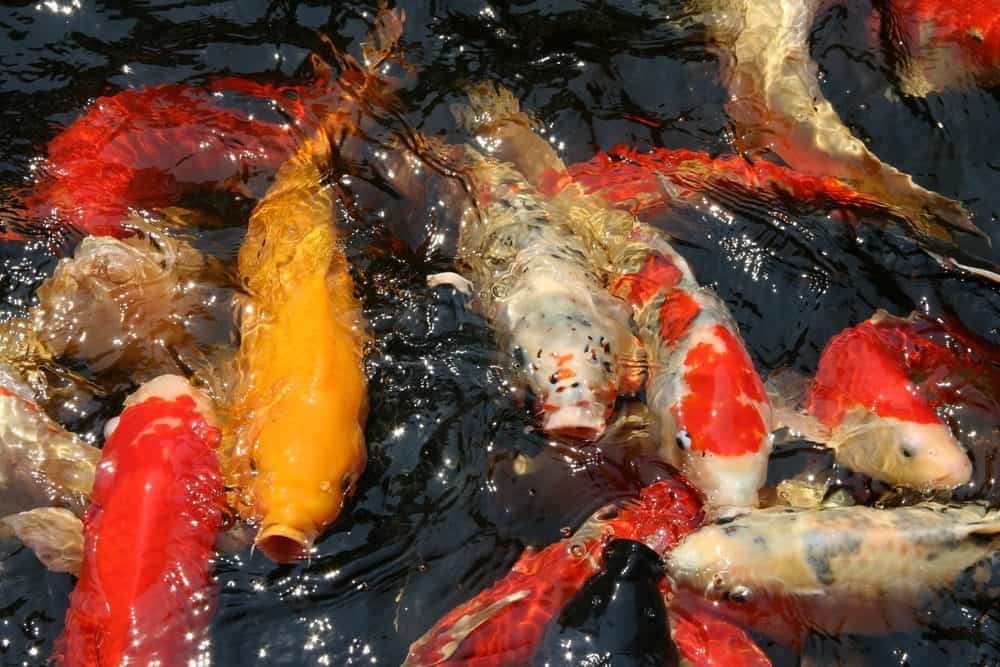
The unique markings and patterns provide a visibly engaging outdoor pond for anyone to enjoy. In addition, some Koi fish will have their coloring change as they age, creating an exciting way to enjoy your Koi as they mature.
As a Koi keeper, if you prefer the red and white Koi colors, several options are available in a Japanese Koi fish. Each variety will have distinct patterns that set it apart from the others. Knowing what to look for will help you determine which Koi fish you want to keep.
Although Utsuri Koi fish are popular for many enthusiasts, their black and red colorings may not be as unique as those you will find with red and white Koi fish varieties.
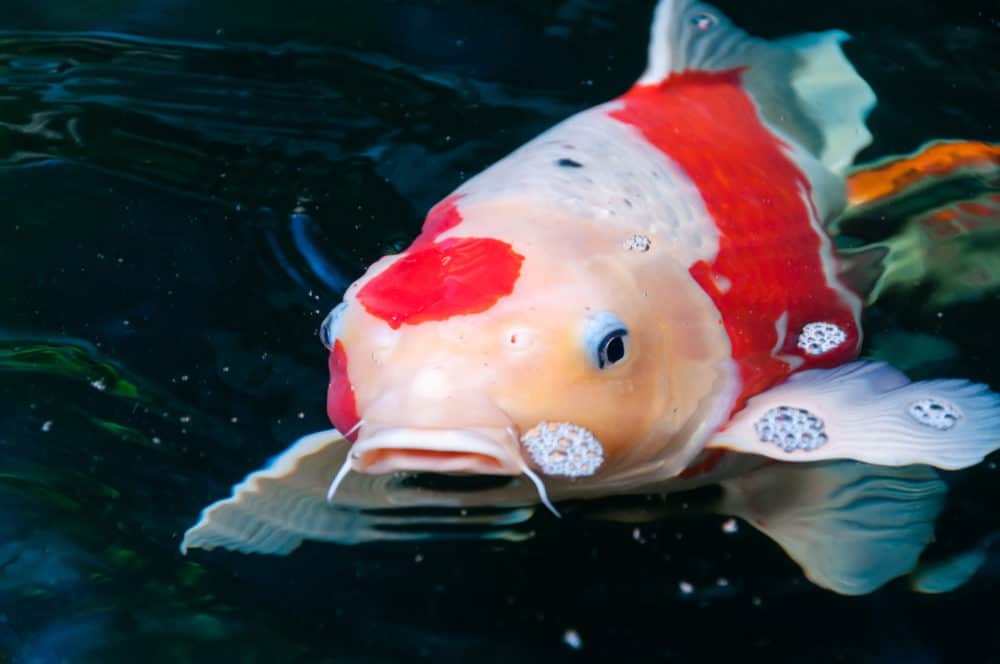
To find your red and white Koi fish, you can begin by exploring these ‘Big Three’ varieties:
Kohaku is the Japanese word for amber. The Kohaku Koi is notable for its white body and red markings throughout. It may have a slightly yellow hue on the nose, but that does not diminish its beauty.
Many believe that the Kohaku fish is one of the very first Koi varieties developed. Coming from the extinct Gosuke bloodline, many varieties of the Kohaku are traceable to this ancient Koi carp.
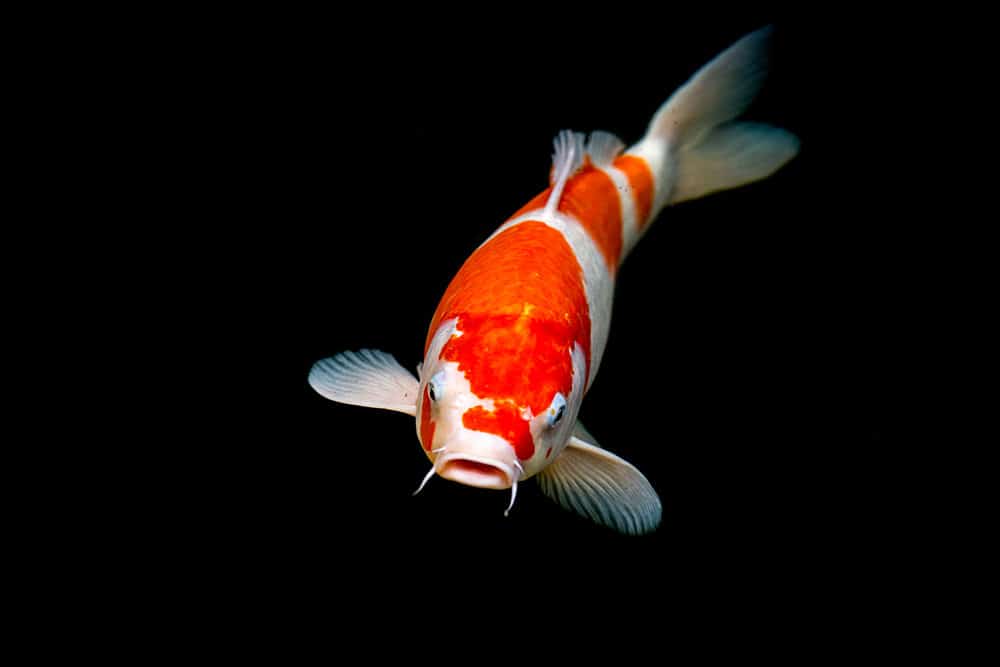
When looking for an exceptional Kohaku specimen, it should have a snow-white or milky-white body with “Hi” (red) markings. The fins and tail will not have any red on them, and there should be no red markings below the fish's lateral line.
Like other Koi, the edges where the red coloring meets the white should be crisp and sharp, with a distinct line between the two hues.
For an alternative to the red and white Koi fish, the Sanke provides an attractive option. However, this fish is predominantly white and sports both red and black (Sumi) markings. Thus, this variety is essentially a Kohaku with the addition of black markings.
Sanke Koi will have a white body with alternating red and black colorings, with some restrictions. There will be no Sumi markings on the face or belly of this fish, and although the red may fall below the lateral line, the black will not. In addition, it should have an even distribution of both colors throughout the body and not show an imbalance.

The fins may sport black stripes, but it will never be a block of color like other Koi varieties. The young Sanke can take up to two years to mature and finish total colorings, with some black markings not present until then.
Opposite to the Sanke, the Showa Koi has a black body with an overlay of red and white colors. Although it may look similar to the Sanke Koi, some attributes set it apart. One distinct feature that showcases a Showa fish is the presence of its black markings on the face, belly, and at the base of and through the pectoral fins.
Showa fish are predominantly red, while white and black help balance the color distribution throughout the body. Like many other Koi varieties, the red and black colorings will darken as the fish matures. Its patterns can also change throughout the years, making it an exciting Koi to keep.
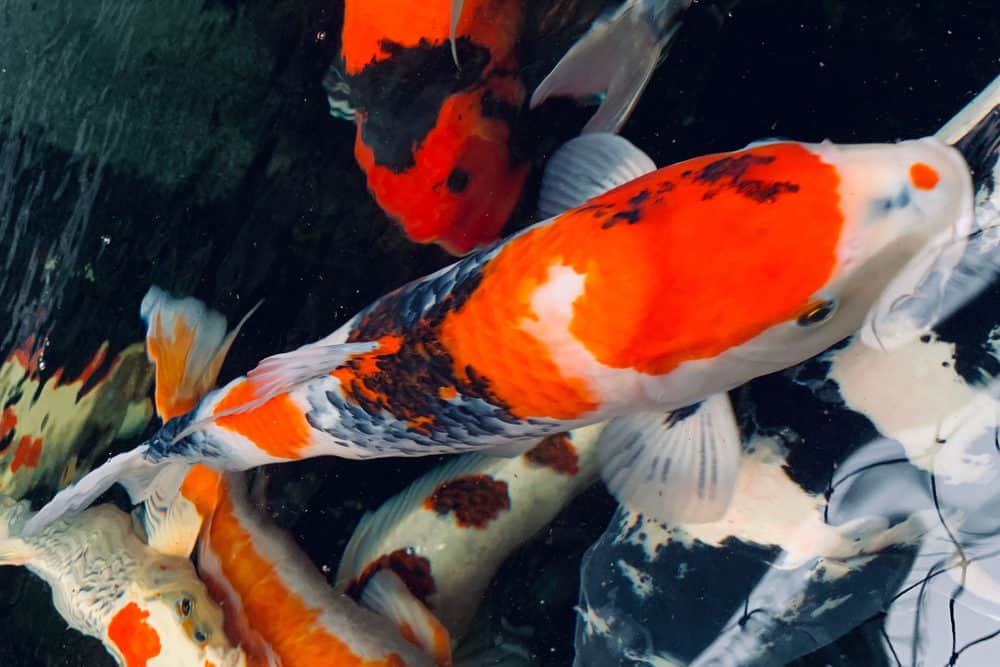
Fish with more red colorings are called Hi Showa and can be confused with Hi Utsuri Koi because of their similar features. When there are white markings at the tail, you can be sure it is a Hi Showa.
Alternatively, potential backyard pond enthusiasts can find other red and white Koi fish in these many varieties:
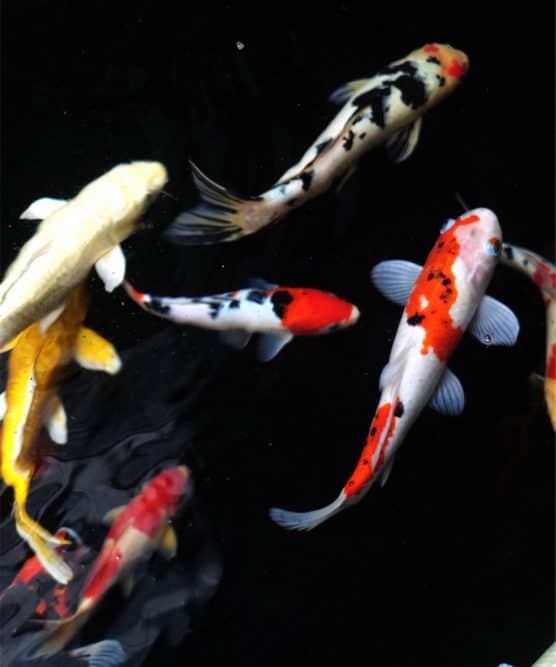
Tancho Koi are extremely popular due to their unique markings. They have one red spot on their head that is similar to the Japanese flag that sports a red circle on a white background.
There are several other varieties of the Tancho Koi fish, including:
The classic Tancho fish has an entirely white body with a red circular marking on the head. This color sits between the eyes and does not extend to the cheeks, shoulder, lips, or elsewhere.
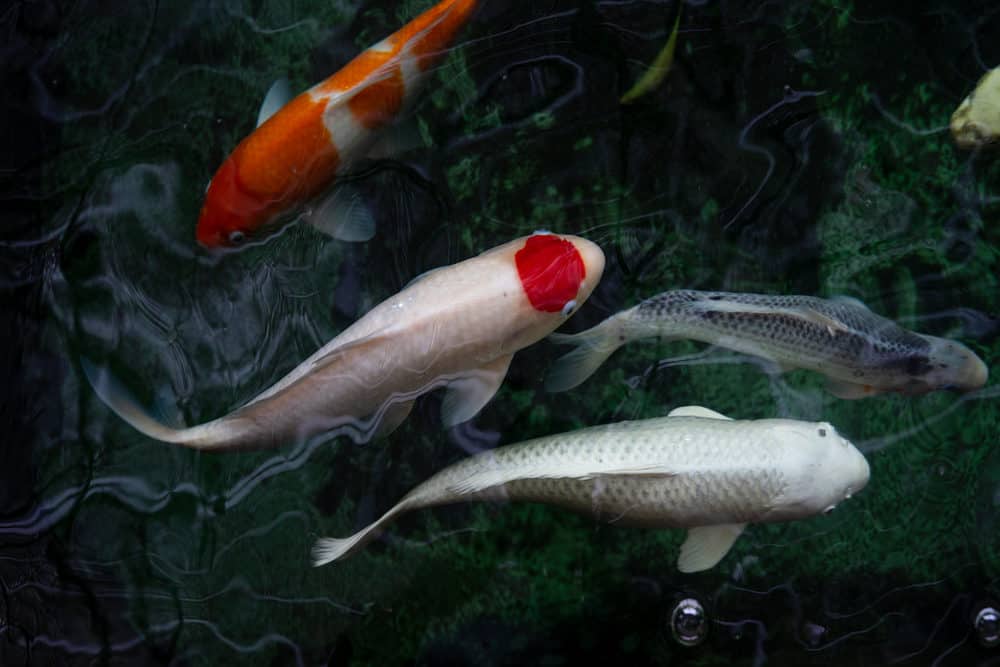
These other varieties can include other markings throughout the fish’s body, but they will still retain the single red color on the head. Unfortunately, it is not an attribute that Koi keepers can breed for, as it happens by chance.
Many Koi enthusiast individuals consider the existence of Tancho Koi as sacred, and these fish are highly sought after.
The Asagi Koi is unique in its blue non-metallic scales that compliment the red and white colorings. The top of its body sports pale blue scales in a netting pattern, while the lower half is typically red, including the gill plates, pectoral fins, belly, and tail. Usually, the head is white but can have hues of grey.
The blue netting pattern on the back of an Asagi Koi fish will darken as it matures, so young Koi sport lighter blue colorings that indicate their age. Similarly, the red on the belly of this fish will migrate upwards towards the dorsal line with age. As a result, young fish will have red colorings low on the abdomen.

One feature of this Koi is the visibility of its skull through the head. The transparency of the colorings allows for this. Although it is possible to find a variety with red markings across the entire head, they are known as Menkaburi Asagi Koi. As only one of two blue Koi varieties, it is a popular choice for many ponds.
For a Doitsu (scaleless) Koi fish, the Shusui is similar to the Asagi Koi. This fish sports an icy-blue or sky-blue scaleless skin pattern across the back and a single row of scales along its dorsal line. Although, it is possible to have a second row of scales along the lateral line.
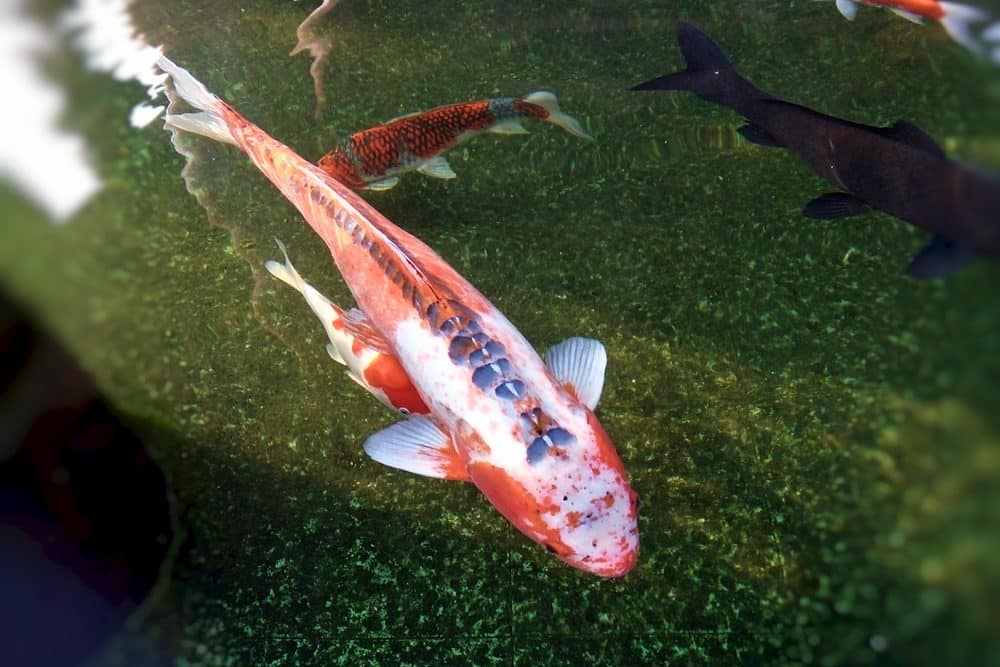
The Shusui will have red colorings on the pectoral fins, gill plates, belly, and tail like the Asagi, but its red can extend well above the lateral line, coming up to the back. There will not be any hi (red) markings on the head of a Shusui. Alternatively, their head should be a blue-grey color allowing the skull to be visible.
The red found on a Shusui is a darker hue that resembles an orange-red or rust-red color. It appears muted and dull when you compare it to other Koi fish varieties. There are some alternatives to the Shusui where red is a dominant color, and you can have blue or yellow hues in your Koi.



